PPT-CS0007: Introduction to Computer Programming
Author : kittie-lecroy | Published Date : 2015-10-16
Introduction to Classes and Objects Review When a argument is passed by value what does the corresponding parameter hold The value of the argument When a argument
Presentation Embed Code
Download Presentation
Download Presentation The PPT/PDF document "CS0007: Introduction to Computer Progra..." is the property of its rightful owner. Permission is granted to download and print the materials on this website for personal, non-commercial use only, and to display it on your personal computer provided you do not modify the materials and that you retain all copyright notices contained in the materials. By downloading content from our website, you accept the terms of this agreement.
CS0007: Introduction to Computer Programming: Transcript
Introduction to Classes and Objects Review When a argument is passed by value what does the corresponding parameter hold The value of the argument When a argument is passed by reference. Decision Structures: The . If-Else If . Statement, . Nested If Statements, Logical Operators, and String Comparison. Review. In a . decision structure. ’s simplest form certain statements are executed only . www.ccsa126.wikispaces.com. Lecture 1: Outline. Introduction. Course Syllabus. Learning Objectives. Textbooks. Labs. Grading. Installing / using Visual Studio 2010. Introduction to programming. What is programming and programming languages?. Array Algorithms. Review. Arrays. . are…. complex . variables that can hold multiple values of the same data . type.. The size . declarator. indicates…. the number of . elements . the array can hold.. The for Loop, Accumulator Variables, . Seninel. Values, and The Random Class. Review. General Form of a switch statement:. switch. . (. SwitchExpression. ). . {. case. . CaseExpression1. :. //One or more statements. Arrays: Higher Dimensional Arrays. Review. If the . ==. operator has two array variable operands, what is being compared?. The reference variables held in the variables.. How do you compare two arrays to see if they hold the same elements?. Decision Structures: The If Statement, Else-If Statement, . and Relational Operators. Review. Scope. refers . to…. where . in a program an entity can be accessed by name.. Three kinds of comments in Java:. Primitive Data . Types and . Arithmetic . Operations. Review. The . console. or . console screen. . is…. . a screen where the input and output is simple text.. When using . the console for output, it is said that you are using . Type Conversion, Constants, . and the . String . Object. Review. Integer Data Types. byte. short. int. long. Floating-Point Data Types. float. double. String Concatenation. is…. the process of appending to the end of a string.. The Desired Brand Effect Stand Out in a Saturated Market with a Timeless Brand The Desired Brand Effect Stand Out in a Saturated Market with a Timeless Brand The Desired Brand Effect Stand Out in a Saturated Market with a Timeless Brand
Download Document
Here is the link to download the presentation.
"CS0007: Introduction to Computer Programming"The content belongs to its owner. You may download and print it for personal use, without modification, and keep all copyright notices. By downloading, you agree to these terms.
Related Documents

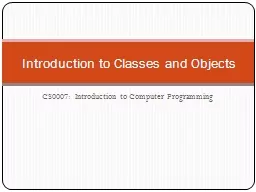
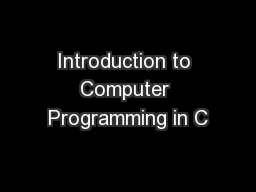
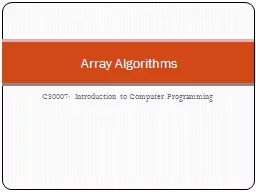
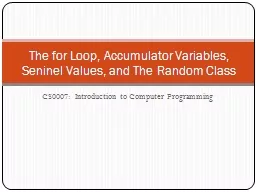
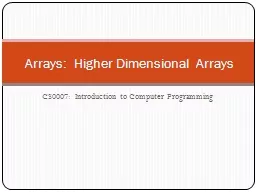
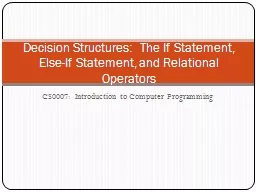
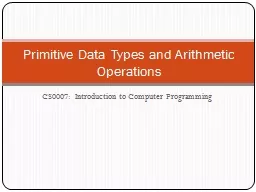
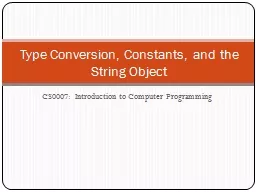
![[eBOOK]-Programming 19:C Programming Professional Made Easy & Excel Shortcuts (Excel Programming,](https://thumbs.docslides.com/980131/ebook-programming-19-c-programming-professional-made-easy-excel-shortcuts-excel-programming-microsoft-excel-python-for-beginners-c-programming-c-programming-languages-android-c-programming.jpg)
![[PDF]-Programming 3: Python Programming Professional Made Easy & C Programming Success](https://thumbs.docslides.com/980147/pdf-programming-3-python-programming-professional-made-easy-c-programming-success-in-a-day-c-programming-c-programming-c-programming-language-html-python-programming-python-java-php.jpg)
![[PDF]-C: Programming: Computer Programming for Beginners: Learn the Basics of C (Coding,](https://thumbs.docslides.com/990051/pdf-c-programming-computer-programming-for-beginners-learn-the-basics-of-c-coding-c-programming-java-programming-c-programming-javascript-python-php.jpg)